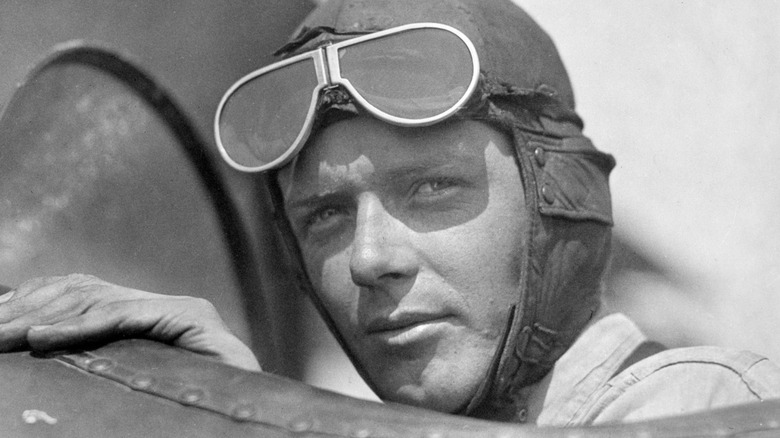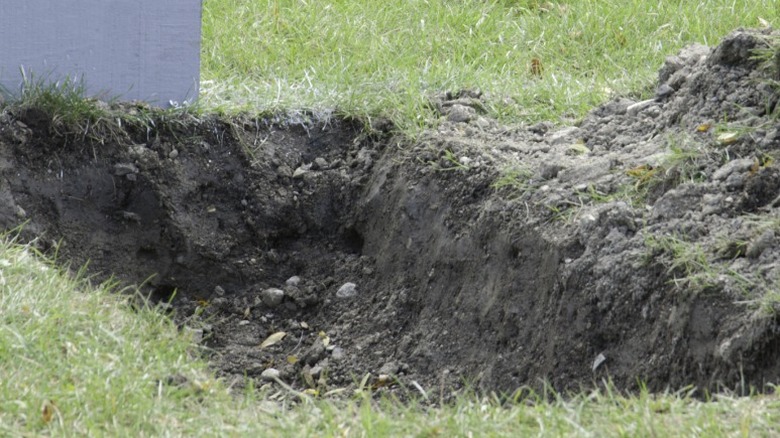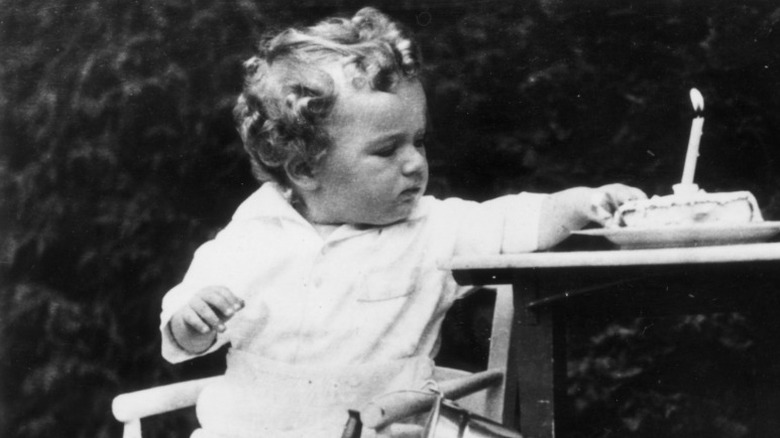The Unsettling Crime Scene Of The Lindbergh Baby Kidnapping
The living nightmare for famed aviator Charles Lindbergh and his wife Anne began late on the evening of March 1, 1932, when their live-in nurse went into their toddler's room and found him missing. Twenty-month-old Charles Lindbergh, Jr. was kidnapped from the Lindbergh home in Hopewell, New Jersey, at around 9 p.m. that evening, his absence not discovered until an hour later. On the window sill of the nursery window lay an important clue. A ransom note was discovered demanding that the Lindberghs pay $50,000 for the return of their child (via the FBI).
The case that would unwind over the next several weeks would involve multiple police agencies, a dozen ransom notes, and national media attention. As the search went on, a retired high school principal named Dr. John F. Condon volunteered to be an intermediary between the Lindberghs and the kidnapper. The kidnapper sent a letter to him confirming his acceptance of the offer, beginning communications via letters and publication between the two men. Dr. Condon and the kidnapper, who called himself "John," met in person on two occasions as well. The second time they met, Dr. Condon gave him the ransom money. As promised, "John" gave Dr. Condon a note with instructions on where to find Lindbergh's child. The note said that the boy was on a boat named the "Nellie" near Martha's Vineyard.
But the child was not found there. It would be nearly two months before anyone would find out what happened to the missing boy. The crime scene surrounding his discovery would be sobering for even the most seasoned investigators.
A gruesome discovery is made on accident
On May 12, 1932, Orville Wilson and William Allen drove Wilson's truck near Mount Rose, New Jersey. The pair pulled off to the side of the road so that Allen could find a place to relieve himself. Seeking some privacy, Allen set off for a wooded area (per Time Magazine). He was about 75 feet from the road when he saw a round object sticking out from some leaves on the ground. He could tell that he was staring at a human skull.
Allen went back to the truck, and he and Wilson drove into town and summoned the local police. One look at the crime scene by investigators would reveal that the remains Allen stumbled across were that of a human child. There were still clumps of hair on the skull as well as around the body. As the Lindbergh home was less than five miles from where the body was found, it was highly suspected that the Lindbergh baby was discovered.
According to the FBI, the child's skull had been crushed. Time reports that there were two fractures on the skull and a hole through the right temple. The body appeared to be lying in a shallow grave dug in haste. The remains still had scraps of clothing, including parts of an undershirt and bits of flannel. Additionally, it would be noted that the body was missing both hands and one leg.
A manhunt leads to the trial of the century
The ransom was largely paid with gold certificates, making identifying them by serial number possible. Alerts were sent out to banks with the numbers to look for. Though reports of matching certificates were reported multiple times, it wouldn't be until a suspicious gas station attendant jotted down the license plate number of the man who had just paid for fuel with a gold certificate (per the FBI). The man paying with this currency fit the description of someone who had been paying with certificates later found to be from the ransom, which prompted him to immediately phone the police.
The plates were traced to Bronx resident Bruno Richard Hauptmann. His home was staked out by police, who would execute an arrest warrant on September 19, 1934. A search of his home revealed more than $13,000 in currency traced back to the ransom payment. He was also identified by Dr. Condon as the man named "John" whom he gave the ransom money.
A five-week trial followed, dubbed the "trial of the century" by the media (per Britannica). Though he protested his innocence throughout, Hauptmann was found guilty and sentenced to death in the electric chair. His appeals were denied all the way to the United States Supreme Court, and his clemency was denied. He was executed on April 3, 1936, still maintaining his innocence.


